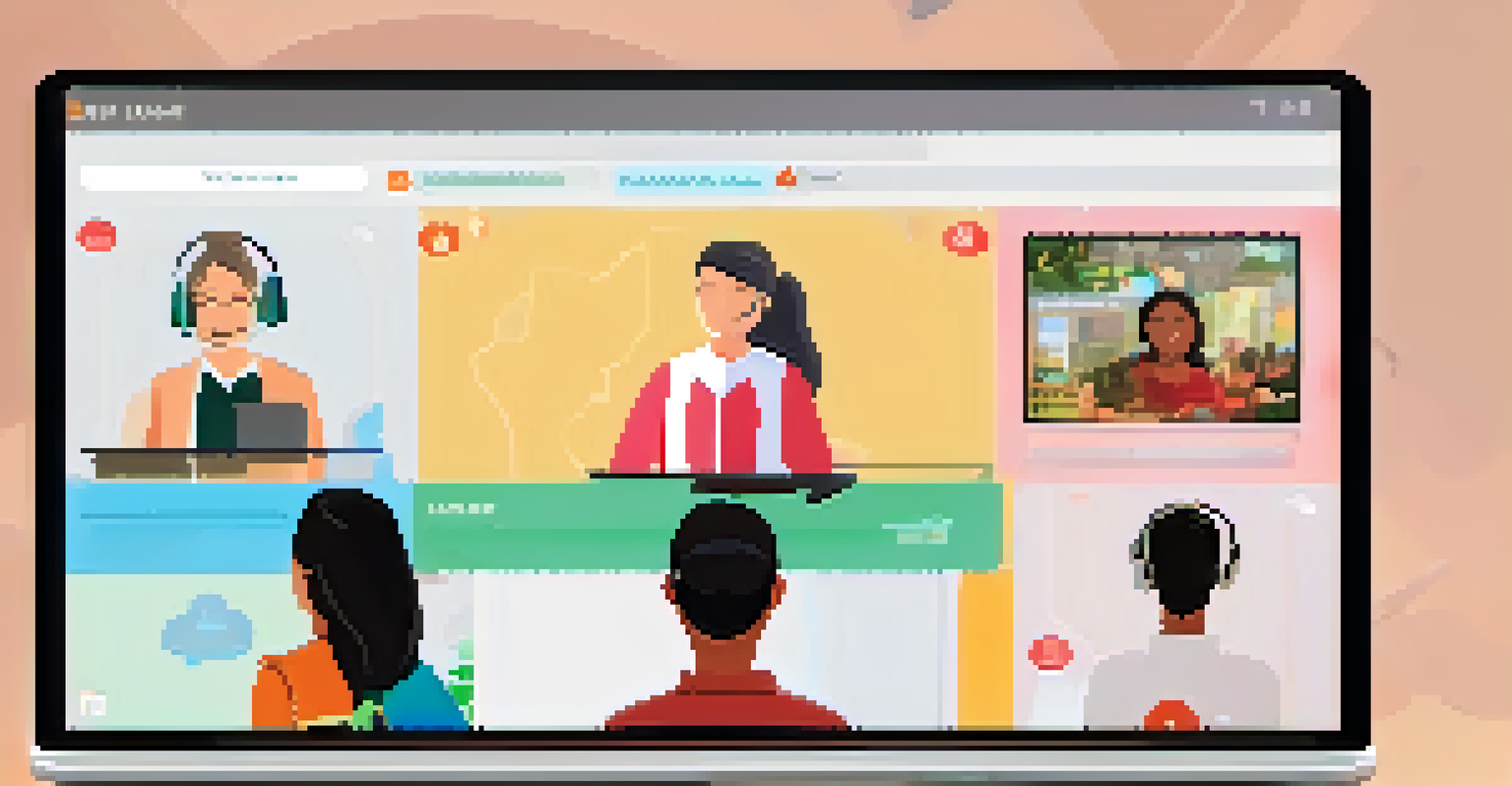Artificial Intelligence in Language Translation for Education

Understanding AI's Role in Language Translation
Artificial Intelligence (AI) has become a game changer in various fields, and language translation is no exception. By using complex algorithms, AI can analyze and translate text with remarkable accuracy, making it an invaluable tool for educators and students alike. Imagine having a virtual assistant that can instantly translate any document or lesson plan into multiple languages, breaking down language barriers in real time.
The limits of my language mean the limits of my world.
This technology primarily involves Natural Language Processing (NLP), a branch of AI that focuses on the interaction between computers and human language. NLP helps machines understand, interpret, and generate human language, enabling effective translations. For instance, tools like Google Translate have evolved significantly, thanks to advancements in AI, allowing users to communicate effortlessly across various languages.
Furthermore, AI-driven translation tools are continually learning from user interactions, which improves their accuracy over time. This means that as more people use these tools, they become increasingly adept at understanding context, idioms, and cultural nuances. In educational settings, this adaptability can enhance the learning experience for multilingual classrooms.
Benefits of AI Translation Tools in Education
AI translation tools offer several benefits that can significantly enhance the educational experience. For one, they provide instant translations, which can help students grasp complex concepts in their native language. This immediacy is crucial in fast-paced learning environments where every minute counts, ensuring that language isn't a barrier to understanding.

Additionally, these tools can assist educators in creating inclusive lesson plans. By translating materials into various languages, teachers can reach a broader audience and cater to diverse classrooms. This inclusivity not only helps non-native speakers but also enriches the overall learning environment by exposing students to multiple languages and cultures.
AI Transforms Language Learning
AI translation tools are revolutionizing education by providing instant translations, helping students grasp complex concepts in their native language.
Moreover, AI translation can foster independent learning. Students can use these tools to explore resources in other languages, broadening their knowledge base and encouraging curiosity. By enabling self-directed learning, AI helps students become more confident and competent learners.
Real-World Applications of AI Translation in Classrooms
AI translation tools are already being implemented in classrooms worldwide, showcasing their practical benefits. For instance, schools with high populations of ESL (English as a Second Language) students are integrating AI tools to help bridge the communication gap. Teachers can use these tools to translate instructions and assignments, ensuring that every student can participate fully.
Language is the road map of a culture. It tells you where its people come from and where they are going.
In addition, universities are utilizing AI in their online courses, providing subtitles and translations for lectures. This accessibility allows international students to engage with course materials more effectively, enhancing their learning experience. Tools like Microsoft Translator are being adopted to facilitate real-time translation during lectures and discussions, making it easier for students to follow along.
Furthermore, educational apps that incorporate AI translation are gaining popularity. These apps often include features like vocabulary builders and grammar checkers in multiple languages, which can assist students in their language acquisition processes. The fusion of technology and education is creating a more dynamic and interactive learning environment.
Challenges and Limitations of AI Translation
While AI translation tools offer numerous advantages, they also come with challenges and limitations. One major concern is context; AI can struggle with understanding nuances, idiomatic expressions, and cultural references, which can lead to inaccurate translations. This limitation highlights the importance of human oversight in educational settings, where context and subtleties matter immensely.
Furthermore, over-reliance on AI translation might hinder language learning. If students depend solely on these tools, they may miss out on the opportunity to develop their language skills. Educators must strike a balance between technology use and traditional language learning methods to ensure students gain proficiency.
Enhancing Inclusivity in Classrooms
These tools enable educators to create inclusive lesson plans, catering to diverse classrooms and enriching the overall learning environment.
Lastly, privacy and data security are significant considerations. Many AI translation tools require access to users' data to function effectively, raising concerns about how that information is stored and used. Institutions must ensure that they choose tools that prioritize user privacy and comply with regulations.
The Future of AI in Language Translation for Education
Looking ahead, the future of AI in language translation for education seems promising. As technology continues to advance, we can expect more sophisticated tools that will provide even more accurate and context-aware translations. Researchers are actively working on improving AI's understanding of different dialects and cultural contexts, which will further enhance its effectiveness in educational settings.
Additionally, the integration of AI with other technologies, such as augmented reality (AR) and virtual reality (VR), holds exciting possibilities. Imagine a classroom where students can interact with 3D models and receive real-time translations of labels and instructions. Such innovations could make learning more immersive and engaging for students from various linguistic backgrounds.
As AI becomes increasingly integrated into educational frameworks, it will likely play a crucial role in shaping multilingual learning environments. This evolution will not only enhance language acquisition but also promote cultural exchange, preparing students for a globalized world.
Best Practices for Implementing AI Translation in Schools
To maximize the benefits of AI translation in educational settings, schools should adopt best practices for implementation. First and foremost, training educators on how to effectively use these tools is essential. By equipping teachers with the knowledge to integrate AI translation into their teaching strategies, schools can ensure that these resources are used effectively.
Moreover, schools should encourage a blended learning approach that combines AI translation with traditional language instruction. This method not only enhances understanding but also helps students develop their language skills. Encouraging students to use AI tools as supplementary resources rather than replacements can foster a more well-rounded educational experience.
Navigating AI's Challenges
While AI translation offers many benefits, challenges like context understanding and privacy concerns highlight the need for balanced implementation in education.
Lastly, gathering feedback from students and educators on the effectiveness of AI translation tools is vital. Continuous assessment will help schools identify areas for improvement and adapt their strategies accordingly. By staying attuned to the needs of their community, educational institutions can make informed decisions about the use of AI in language translation.
Conclusion: Embracing AI for a Multilingual Future in Education
In conclusion, the integration of AI in language translation for education presents a wealth of opportunities for enhancing learning experiences. By breaking down language barriers, AI tools are paving the way for more inclusive and engaging educational environments. As technology continues to evolve, it will empower students and educators to connect across cultures and languages.
However, it's essential to approach this technology thoughtfully, considering both its advantages and limitations. By providing training, encouraging a balanced approach to language learning, and prioritizing user privacy, educational institutions can harness AI's full potential while safeguarding their communities.

Ultimately, embracing AI in language translation will lead to a more multilingual and interconnected future in education, where every student has the opportunity to thrive, regardless of their language background.